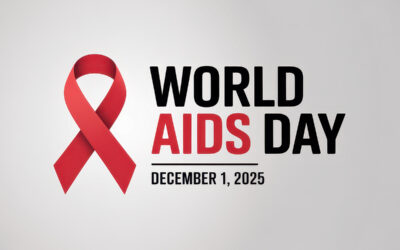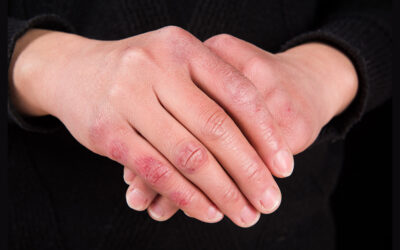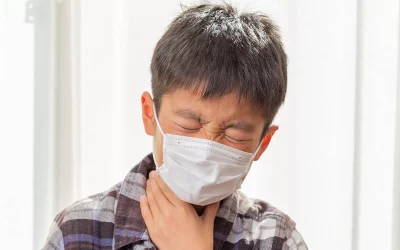Whooping Cough (Pertussis): Symptoms You Should Never Ignore

Pertussis, or whooping cough, is a highly contagious respiratory infection characterised by severe and persistent coughing spells. Although often mistaken for a stubborn cold in its early phase, the condition can become more serious as the cough intensifies and breathing becomes difficult during episodes. The illness poses particular risks for infants, older adults, and individuals with weak immunity, making early recognition especially important. Understanding how whooping cough progresses and identifying its warning signs can help prevent complications and ensure timely medical care. In this article, we discuss whooping cough in detail, including the symptoms that should never be ignored and the situations that require timely medical attention. Let’s begin with the basics.
Table of Contents
ToggleUnderstanding Whooping Cough (Pertussis)
Whooping cough, medically known as pertussis, is a bacterial infection that affects the airways and causes intense coughing episodes. The infection occurs when Bordetella pertussis attaches to the lining of the respiratory tract, leading to swelling, mucus build-up, and irritation that make breathing difficult during coughing spells.
The condition spreads easily from person to person through droplets released while coughing or sneezing, which is why outbreaks often occur in families, schools, and close-contact environments. Although anyone can contract pertussis, infants, older adults, and individuals with weakened immunity are more vulnerable to severe symptoms.
Causes and Transmission of Whooping Cough
Whooping cough develops when a specific bacterium infects the airways and begins to spread through close contact. Understanding how the infection starts and how it transmits helps explain why outbreaks occur so easily.
What Causes Pertussis?
The infection is caused by Bordetella pertussis, a bacterium that attaches to the lining of the respiratory tract. Once it settles in the airways, it:
- Produces toxins that irritate and inflame the airway lining
- Triggers excessive mucus production
- Makes the airways highly sensitive, leading to severe coughing spells
How does it Spread?
Pertussis spreads rapidly through respiratory droplets released into the air. Transmission commonly occurs when an infected person:
- Coughs or sneezes near others
- Shares close living or working spaces
- Has prolonged face-to-face contact with infants or older adults
Because the early symptoms resemble a mild cold, many individuals may spread the infection unknowingly during the contagious stage.
Read more-Bronchiolitis: A Complete Guide for Parents
Stages of Whooping Cough
Whooping cough progresses through distinct stages, and each phase presents different symptoms. Recognising these stages helps in understanding how the illness develops and when symptoms become more concerning. Stages include:
Catarrhal Stage
This initial phase resembles a common cold and lasts for one to two weeks. Individuals may experience a mild cough, runny nose, low-grade fever, and occasional sneezing. The infection is most contagious during this period.
Paroxysmal Stage
The cough becomes severe and occurs in repeated fits known as paroxysms. These episodes may cause difficulty breathing, a high-pitched “whoop” sound during inhalation, and vomiting after intense coughing. This stage can last several weeks and is typically the most challenging phase.
Convalescent Stage
Symptoms gradually improve as the airways begin to heal. The coughing spells become less frequent, but a lingering cough may continue for several weeks. Individuals remain at risk of flare-ups if they contract another respiratory infection during this stage.
Symptoms of Whooping Cough You Should Never Ignore
Whooping cough symptoms become more noticeable as the infection progresses, especially during the severe coughing phase. The signs listed below can help identify when the condition requires close attention:
- Severe coughing fits: Sudden bursts of repeated coughs that make it hard to catch a breath.
- A high-pitched “whoop” sound: A distinctive sound made while inhaling after a coughing spell, more common in children.
- Vomiting after coughing: Intense episodes may lead to gagging or vomiting, especially in young children.
- Bluish skin during coughing: Lips or face may turn blue due to difficulty getting enough oxygen.
- Breathing difficulty: Individuals may struggle to breathe normally between coughs.
- Extreme tiredness: Severe coughing can leave the person exhausted and unable to carry out routine activities.
- Mild fever: Often present in the early stage but usually not high.
- Infant warning signs: Newborns may show pauses in breathing, poor feeding, irritability, or unusual sleepiness instead of making the classic “whoop” sound.
Who is at Higher Risk of Severe Pertussis?
Although whooping cough can affect individuals of all ages, certain groups are more vulnerable to severe symptoms and complications, such as:
- Infants and newborns: Babies younger than six months often experience pauses in breathing and may require hospital care.
- Pregnant women: Infection during pregnancy increases the risk of complications for both mother and baby.
- Older adults: Age-related changes in lung function make severe coughing episodes harder to tolerate.
- Individuals with weak immunity: Conditions such as uncontrolled diabetes, chronic illnesses, or long-term medication use weaken the body’s defence against infection.
- People with lung conditions: Asthma, chronic bronchitis, and other respiratory problems can worsen rapidly with pertussis.
- Unvaccinated individuals: Without adequate vaccination, the body has little protection against severe infection.
When to Seek Medical Care?
Whooping cough becomes dangerous when the coughing spells start affecting breathing, feeding, or daily functioning. The warning signs below indicate the need for prompt medical attention:
- A cough lasting more than two weeks: Persistent coughing may point towards pertussis rather than a routine infection.
- Breathing pauses in infants: Any episode of stopped or irregular breathing requires urgent evaluation.
- Blue or dusky skin during coughing: Discolouration of the lips or face suggests reduced oxygen levels.
- Repeated vomiting after coughing: Frequent vomiting may lead to dehydration, especially in young children.
- Difficulty feeding in infants: Poor feeding or reduced intake signals rising distress.
- Severe tiredness or inability to sleep: Exhaustion from continuous coughing affects overall health.
- Signs of dehydration: Dry mouth, fewer wet diapers in infants, or reduced urination in older children.
- Worsening symptoms in individuals with asthma or lung disease: Existing respiratory conditions can escalate quickly with pertussis.
Timely assessment helps prevent complications and ensures appropriate treatment based on the stage and severity of the illness.
Diagnosis of Whooping Cough
Doctors use a combination of clinical evaluation and specific tests to confirm whooping cough and determine how far the infection has progressed. Early diagnosis helps reduce complications and limits the spread of the illness. The diagnosis includes:
Clinical Evaluation
Doctors begin by assessing symptoms, listening to the lungs, and reviewing the duration and pattern of the cough. They may also check for breathing difficulty, dehydration, or signs of infection in infants and older adults.
Diagnostic Tests
The following tests help confirm pertussis and rule out other respiratory issues:
- PCR test (nasal swab): Detects Bordetella pertussis bacteria using a small sample collected from the nose or throat.
- Blood tests: Identify infection markers, especially in prolonged or severe cases.
- Chest X-ray: Helps detect complications such as pneumonia or airway swelling.
- Lung sound assessment: Doctors listen for unusual respiratory sounds that support the diagnosis.
- Culture test: In select cases, a sample from the nose or throat is grown in a laboratory to detect the bacteria.
This approach ensures accurate identification of pertussis and supports timely treatment planning.
Treatment of Whooping Cough
Timely treatment plays an important role in reducing symptom severity, preventing complications, and limiting the spread of infection. Doctors recommend a combination of medicines and supportive care based on the patient’s age, symptoms, and overall health. Common treatment approach include:
Antibiotics
Doctors prescribe antibiotics to control the infection, especially during the early stages. These medicines help reduce the severity of symptoms and lower the risk of transmission to others. In infants, pregnant women, and high-risk individuals, early antibiotic therapy is particularly important.
Supportive Care
Several measures help relieve discomfort and support recovery:
- Adequate hydration: Fluids prevent dehydration and loosen mucus.
- Rest: Reduces strain on the body during severe coughing episodes.
- Nutrient-rich meals: Small, frequent meals may be easier for children experiencing vomiting after coughing.
- Humidified air: Helps soothe irritated airways and makes breathing easier.
Managing Coughing Fits
Doctors may suggest steps to reduce the intensity of coughing episodes, such as avoiding irritants, maintaining clean indoor air, and using inhalation therapy when appropriate. Medicines that suppress cough are used cautiously and only when clinically necessary.
Care for Infants
Infants with pertussis often require close monitoring due to their higher risk of breathing pauses and dehydration. In severe cases, hospital care may be needed to ensure safe breathing, proper feeding, and continuous observation.
Prevention of Whooping Cough
Preventive measures play a key role in reducing the spread of pertussis, protecting vulnerable groups, and lowering the chances of severe illness. The following strategies help reduce infection risk and support community protection:
Vaccination (DTaP and Tdap)
Vaccination remains the most effective way to prevent whooping cough.
- DTaP vaccine: Given in childhood as part of routine immunisation.
- Tdap booster: Recommended for adolescents, adults, pregnant women, and caregivers of infants.
Vaccination helps the body develop immunity and reduces the risk of severe symptoms.
Cocooning Strategy
This approach involves vaccinating close family members, caregivers, and household contacts of newborns. It protects infants who are too young to receive the full vaccine schedule.
Good Hygiene Practices
Simple steps reduce transmission significantly:
- Frequent handwashing
- Wearing masks during respiratory outbreaks
- Covering coughs and sneezes
- Avoiding close contact with infected individuals
Protecting Indoor Air Quality
Keeping the home environment well ventilated, reducing smoke exposure, and maintaining clean indoor air help limit airway irritation and reduce infection risk.
These preventive measures strengthen overall respiratory protection and help safeguard high-risk groups, especially infants and older adults.
Difference Between Whooping Cough and Common Cough
Although both conditions involve coughing, whooping cough presents distinct features that set it apart from routine infections. Understanding these differences helps in identifying when a cough needs medical attention.
Key Differences:
| Parameter | Common Cough | Whooping Cough (Pertussis) |
| Sound of the Cough | May be dry or wet depending on the infection | Repeated coughing fits followed by a sharp “whoop” sound during inhalation |
| Duration | Usually improves within 1 to 2 weeks | Can last for several weeks or even months |
| Severity | Causes mild to moderate discomfort | Leads to intense, rapid coughing spells that can make breathing difficult |
| Breathing Difficulty | Rarely causes severe breathing issues | May cause breathing pauses, especially in infants |
| Post-Cough Symptoms | Usually no major symptoms after coughing | May lead to vomiting, exhaustion, or bluish skin after an episode |
| When to Seek Medical Attention | If the cough persists or worsens | Always requires medical evaluation, especially in children and high-risk individuals |
Potential Complications of Whooping Cough
Whooping cough can lead to several complications, especially when symptoms remain untreated or when the infection affects infants, older adults, or those with weak immunity. The following complications highlight why early diagnosis and timely care are essential.
- Pneumonia: The infection may spread deeper into the lungs, causing inflammation that requires medical treatment.
- Rib fractures: Severe coughing spells can strain the chest wall and lead to painful rib injuries.
- Breathing pauses in infants: Young babies may stop breathing for short periods, making immediate medical evaluation necessary.
- Dehydration: Vomiting after coughing and poor feeding can cause fluid loss, particularly in children.
- Seizures (rare): A lack of oxygen during severe coughing episodes may trigger seizures in vulnerable individuals.
- Slow recovery: The cough may linger for weeks, and the body may take longer to regain strength, especially in infants and older adults.
Why Choose Graphic Era Hospital for Whooping Cough Care?
Managing whooping cough requires accurate diagnosis, close monitoring, and careful support, especially for infants and individuals at higher risk. At Graphic Era Hospital, we focus on safe, timely, and patient-centred respiratory care to ensure every individual receives the attention they need. We offer:
Experienced Pulmonary Specialists
At Graphic Era Hospital, our team of highly skilled pulmonologists evaluate every case with care, assessing symptoms in detail and listening for characteristic respiratory sounds that indicate pertussis. They identify the stage of the illness accurately and create evidence-based treatment plans that support safe and steady recovery.
Advanced Diagnostic Facilities
Graphic Eran Hospital uses dependable diagnostic tools including PCR testing, blood investigations, and chest imaging to confirm whooping cough with precision. These tests help detect the infection early, assess its severity, and identify complications that may require closer attention.
Comprehensive Monitoring for Infants and High-Risk Patients
Infants, older adults, and individuals with low immunity often need closer supervision. Our team provides continuous monitoring, timely intervention, and supportive care to address breathing difficulty, feeding issues, or dehydration promptly.
Personalised Treatment and Supportive Care
Treatment approaches are tailored to age, symptom severity, and individual health needs. Families receive clear guidance on easing coughing spells, maintaining comfort at home, and reducing the risk of spreading the infection within close-contact environments.
Dietary and Supportive Recommendations for Recovery
Supportive care plays an important role in easing discomfort, maintaining strength, and helping the airways recover from inflammation. The following dietary and lifestyle measures complement medical treatment and promote steady improvement.
Dietary Recommendations
A nourishing diet helps the body fight infection and regain energy. The options below support hydration, immunity, and overall recovery:
- Warm fluids: Soups, herbal teas, and warm water help soothe the throat and loosen mucus.
- Foods rich in dietary fibre: Whole grains, dals, vegetables, and fruits support digestion and overall well-being.
- Vitamin-rich fruits: Amla, oranges, guava, and papaya help strengthen immunity.
- Small, frequent meals: Especially helpful for children experiencing vomiting after coughing.
- Adequate hydration: Regular fluid intake prevents dehydration caused by repeated coughing or reduced appetite.
Supportive Measures
Simple daily habits help reduce airway irritation and make breathing easier during recovery:
- Clean indoor air: Keep rooms well ventilated and reduce exposure to smoke or incense.
- Humidified air: Using a humidifier or steam inhalation can ease throat irritation.
- Rest: Adequate rest helps the body recover from repeated coughing spells.
- Avoiding cold air and pollutants: Protects the airways from further irritation.
- Gentle positioning for infants: Keeping babies slightly upright after feeds helps ease breathing and reduce coughing discomfort.
These dietary guidance and supportive steps work alongside medical treatment to improve comfort, protect the airways, and support overall recovery.
Conclusion
Whooping cough is a serious respiratory infection that needs timely attention, especially when symptoms become persistent or severe. Recognising the early signs, understanding how the condition progresses, and seeking medical care at the right time play an important role in preventing complications, particularly in infants, older adults, and individuals with weak immunity. For those experiencing prolonged coughing spells or worrying symptoms, prompt evaluation can make a significant difference. To book a consultation at Graphic Era Hospital, call 1800-889-7351.
Frequently Asked Questions
What causes pertussis disease?
Pertussis is caused by Bordetella pertussis, a bacterium that infects the lining of the airways and triggers severe coughing spells.
How long does whooping cough usually last?
Whooping cough can last several weeks to months. The severe coughing phase often continues for four to six weeks before gradually improving.
Is whooping cough contagious?
Yes. Pertussis spreads easily through droplets released during coughing or sneezing, especially in close-contact settings.
Can adults get whooping cough even after vaccination?
Yes. Immunity weakens over time, so adults can still contract pertussis. A Tdap booster helps strengthen protection.
What is the difference between a dry cough and a pertussis cough?
A dry cough is usually mild and short-lived, while a pertussis cough occurs in repeated fits, may cause vomiting, and often produces a “whoop” sound on inhalation.
How dangerous is whooping cough in infants?
Infants face a higher risk of breathing pauses, dehydration, and pneumonia. They often need close monitoring and early medical care.
When should someone look for a “whooping cough specialist near me”?
A specialist consultation is important when the cough lasts more than two weeks, breathing becomes difficult, or infants show pauses in breathing or poor feeding.
By Specialities
- Bariatric Surgery
- Cancer Care
- Cardiology
- Dental
- Dermatology
- Diabetes & Endocrinology
- Endocrinology and Diabetes
- ENT (Ear Nose Throat)
- Eye Care
- Gastroenterology
- Haematology
- Health Care
- Health Tips
- Hematology
- Hepatology
- Internal Medicine
- Mental Health and Behavioural Sciences
- Metabolic
- Neonatology
- Nephrology
- Neurology
- Nutrition & Dietetics
- Obstetrics & Gynaecology
- Oncology
- Ophthalmology
- Orthopaedics
- Paediatric
- Physiotherapy & Rehabilitation
- Plastic and Reconstructive Surgery
- Psychology
- Pulmonology
- Rheumatology
- Spine
- Urology
Recent Posts
Need expert medical advice?
Share your details and our healthcare specialists will reach out to assist you.
By proceeding, you acknowledge and agree to our Privacy Policy, Terms of Use, and Disclaimer.




















